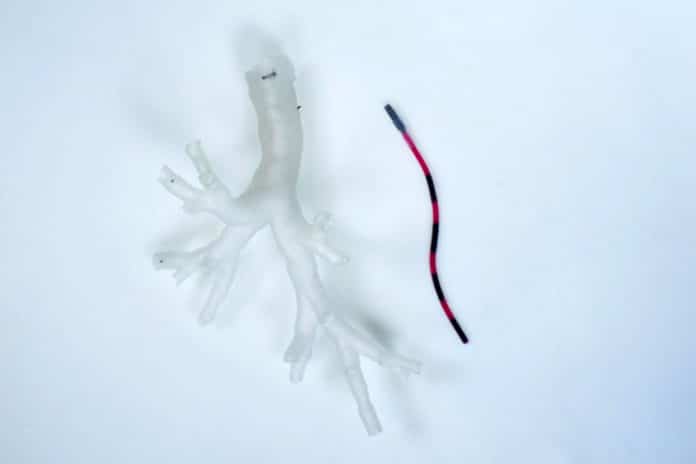Undoubtedly, the introduction of robotics in the field of medicine is giving great news in recent years. Robots in the medical field are transforming how surgeries are performed, streamlining supply delivery and disinfection, and freeing up time for providers to engage with patients.
Now, a team of engineers and scientists from the University of Leeds has created a magnetic tentacle robot that can reach some of the smallest bronchial tubes in the lungs to take tissue samples or deliver cancer therapy.
The robot consists of external magnets and a tentacle – a thin polymer tube containing metallic particles. The researchers manufactured the tentacle from a series of interlinked cylindrical segments, each 2 millimeters in diameter and around 80 millimeters in length. The segments were made of a soft, flexible elastomeric or rubber-like material and impregnated with tiny magnetic particles. Because of the presence of the magnetic particles, the interlinked segments can move under the effect of an external magnetic field.
The result is a magnetic tentacle robot that can suddenly turn left and right and is small enough to avoid snagging on anatomical structures in the lungs. Magnets mounted on robotic arms on the outside of the patient are used to guide the device in a process that would be tailor-made for each procedure.
The robot uses a personalized robotic guidance system for each patient and procedure, eliminating the need for x-rays during surgery. The route through the bronchial tree is planned from pre-operative scans of a patient’s lungs and programmed into the robotic system. As the magnets outside of the patent move, they develop forces on the magnetic particles in the segments of the catheter, causing them to change shape or direction – enabling the robot to be maneuvered through the lungs and to a site of a suspicious lesion.
The magnetic tentacle robot – whose shape can be magnetically controlled to conform to the bronchial tree anatomy – can reach most areas of the lung. It would be an important clinical tool in the investigation and treatment of possible lung cancer and other lung diseases.
